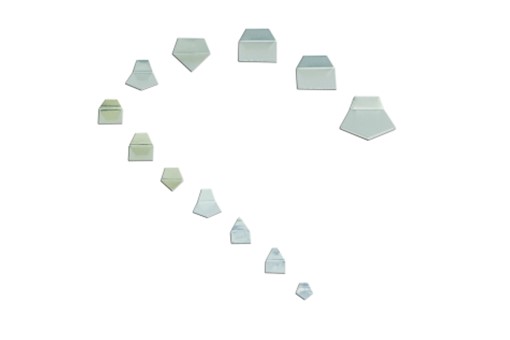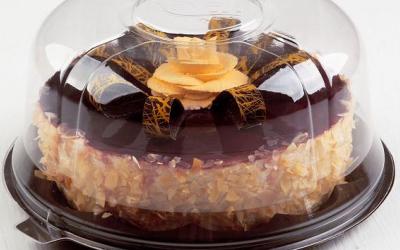A turning point in agriculture. What agricultural crops does Lukashenko pay special attention to?

Last year, the HEAD of state stressed in an experimental field in his small homeland in the Shklovsky district that a historic and turning point in agriculture had come. He turned his attention to winter barley. After that, both the media and experts started talking about this crop. Is winter barley capable of making a revolution in the agro-industrial complex of the country? In the new issue of the BelTA YouTube project "In Fact: Decisions of the First" we will tell you whether the head of state's opinion on the miracle culture has changed, what is its peculiarity and at what yield, in the opinion of the President, the Belarusians would be in chocolate.
How climate change affects the work of Belarusian farmersThe Belarusian summer is so short that the townspeople do not have time to enjoy it. And what then to say about the villagers, who still need to have time to grow crops. The most ungrateful thing is to make predictions. And this year is proof of that. May 2023 was the driest since 1945. During the month, an average of 12 mm of precipitation fell, which is about 20% of the climatic norm. The drought corrected not only the timing of the start of the harvest, but also the sequence of crops: earlier, the battle for the harvest began with winter rye, now - with winter barley. It ripens earlier than others and is less affected by drought.
“At the moment, we are considering the possibility of increasing breeding work with winter barley. We understand that the ratio of spring and winter barley will change in production. We plan to increase the volume of winter barley nurseries, slightly reducing the volume of spring barley. Three new varieties have been prepared: "Ranak", which is uncharacteristic, as well as two typical ones - "Dnepr" and "Vytok", - said Alexander Zubkovich, head of the barley laboratory of the Scientific and Practical Center for Agriculture of the National Academy of Sciences of Belarus.
refers to winter cereals. He is accompanied by rye and wheat. They are sown in late summer or early autumn before the onset of stable frosts. The crop is harvested the following year. In the food industry, winter barley grain is used to create barley and barley groats, as well as barley FLOUR. It is also an excellent raw material for the production of beer, kvass and coffee surrogates . Grain is not only bread, but also MILK , cheese, sour cream, MEAT . And all because in the feed ration of cattle , pigs and birds, grains occupy a significant share. They are rich in proteins and contain starch.
Why did Lukashenka pay attention to winter barley at one time?We took a closer look at this culture at the suggestion of the head of state. While still the head of an agricultural enterprise, he was engaged in its cultivation. Therefore, the President knows from personal experience that winter barley is harvested earlier than other grain crops. This allows you to quickly get feed for livestock and more evenly use equipment before mass harvesting.
During a working trip to the MINSK region in August 2019, the President told how he grew winter barley when he was in charge of an agricultural enterprise: “I probably sowed winter barley on 200 hectares. The yield, of course, is lower than that of other crops, but this is salvation when no fodder, in the spring. At the end of May, winter barley approached.
What agricultural areas in Belarus are occupied by winter barleyThe decision of Alexander Lukashenko is to systematically increase the sowing of this crop. For example, this year winter barley occupies 161 thousand hectares across the country, which is 2.7 times more than in 2022. This is 11% of arable land. But, as the President noted more than once, special attention should be paid to technology and a reasonable balance should be observed in order to get a grain wedge at the expense of other crops in case of low yields. And you should not force farms to sow certain areas with winter barley. You can still see it in places.
“From all standpoints, winter barley should be cultivated. In Soviet times, they didn’t give a damn about it. Now technology, machinery, and people are different. We can easily get good barley yields. during a working trip to the Slutsk region in July last year.
At the same time, the President added: "In no case should you press. They should decide on their own, taking into account experience, how much to cultivate barley."
At a recent selector on the harvesting campaign, Alexander Lukashenko again turned to this crop. "I emphasize: winter barley is not my invention, we cultivated it for a long time, but according to the residual principle. We have never paid special attention to this culture, but it needs to be paid special attention if you decide to cultivate it. This is a capricious culture, it is good there, where technologies are observed (in principle, like any other crop, but winter barley - first of all), - the President said. - Winter barley, I believe, to be. It survived the disasters of the past and this year and gave a good harvest."
What are the features of winter and spring barleyThe changing climate dictates agricultural trends. The trend of the last five years is that winter grains give a larger yield than spring ones. Winter crops can be saved by top dressing in the spring, but spring crops are more susceptible to the vagaries of the weather. It doesn’t happen year after year: this season is dry, and next there may be heavy rains. Hence the President's demand: not to blame the weather, but to work hard in the fields.
“I understand very well that these are not last year’s conditions. If there was no rain in the country for 40 days, then, naturally, this somehow affected all regions. But it’s wrong to refer to the fact that it’s a disaster, everything burned down, is wrong. Yes, we won't get last year's record harvest, but I don't demand that from you.If you were able to take 10.5 million grains of all crops last year, I ask you nine.And we can collect if we organize and we have normal discipline "If the machine operator is responsible for the condition of the equipment so that the trail after the combine is not sown. This is the work of an engineer, agronomist, manager and, above all, a machine operator. If we save the grain that is in the field today, then we will have a harvest," - confidence in this the head of state expressed at a recent harvesting selector.
Winter barley is cultivated in countries with mild winters. These are mainly the southern regions of Europe and Asia. In the EU, the main producers of barley grain are France , Germany , Austria, Spain. By the way, analysts expect a decline in the barley crop this year . For example, according to Spanish farmers, the drought has caused irreparable damage to more than 3.5 million hectares of cereals. According to recent observations, the Belarusian climate is increasingly reminiscent of Spanish. Winters are neither cold nor snowy. The moisture is getting smaller. Winter crops have no time to hibernate. That is why scientists are working on breeding new varieties.
What is grown on the experimental fields of the President"Winter barley to be!" - the President will say this year as well. Alexander Lukashenko personally monitors the entire agricultural cycle from sowing to harvesting. On the experimental fields, the heads of state continue to test new varieties from Belarusian scientists, including barley. By the way, it was from the Alexandrian lands that the "Buslik" flew to all regions. He was allowed to grow throughout the country and included in the state register of varieties.
“Currently, 13 varieties are included in the register of Belarus, but not all of them are cultivated. The largest areas are occupied by the French varieties Teresa and Isocel. They also grew in the presidential fields,” Alexander Zubkovich said.
The scientist also noted the Belarusian variety of winter barley "Buslik", which also showed decent results in the presidential fields. “Although we were very worried, I will not hide it. This is a big responsibility. The head of state is in control of the situation, he sees everything. Sunflowers, soybeans, peas , lupins are currently growing on the so-called experimental presidential fields. French varieties "Teresa", "Isocel", - he added.
Alexander Zubkovich drew attention to the fact that the variety "Buslik" has been cultivated in production for only the second year. "We have sold it at the request of all regions. This is about 5.3 thousand hectares. Agricultural production will be able to test it. As for RUSSIA, Buslik was also tested there. It is included in the state register and approved for use. Now we are processing patent in Russia," the scientist concluded.
What is the yield of winter barley"I must tell you that winter barley yields more than 50 quintals (per hectare - approx. BELTA). If we had such an average yield across the country of all crops, listen, we would be, as people say, in chocolate. Therefore, the crops of winter barley should be expanded," the head of state addressed Anatoly Isachenko, chairman of the Mogilev Regional Executive Committee, who made a report to the President in July last year.
The head of state always pays close attention to the issues of the agro-industrial complex. And not just inspects, but he sets the pace. It is not for nothing that journalists called the presidential fields agro-classes for the whole country, where they demonstrate the farming of tomorrow. The climate is changing, the world economy is being transformed , new technologies are being introduced. And here you need to be one step ahead. Because at all times bread is the head of everything.
"Grain today is akin to gold and foreign exchange reserves. It will always come in handy and is constantly growing in price. At least, there have not been and will not be such prices on the international market as yesterday and today. That's for sure. And if we have free capacities, why not In order to ensure our own food security, so that, as the people say, we have "and bread, and yes bread" on the table, Alexander Lukashenko emphasized the importance of ensuring food security at a recent harvesting selector.
The project was created at the expense of targeted collection for the production of national content.
Read together with it:
- The Russian Ministry of Agriculture proposes extending veterinary regulations until 2032.The extension includes regulations for the prevention and eradication of diseases such as bradsot (Clostridium septicum), trichinosis (Trichinella), blackleg (Clostridium chauvoei), and porcine reproductive and respiratory syndrome (PRRS). The proposed changes stipulate the following new deadlines: for bradsot and trichinosis - from March 1, 2......
- He crawled to the icon with prayer. The true story of a man who overcame drug addiction.Alexander Ovchinnikov. Topic News. Our project's hero was a drug addict for many years. The thought that this was a dead end never left him, but his addiction proved stronger. One day, when he could no longer walk, he crawled to an icon in prayer. This became his first step toward a new life. Today, he heads a charity center that helps those who have given up hope and are unable to quit ALCOHOL an...
- Низкое предложение и устойчивый спрос: в Аргентине растут цены на мясоЦены на говядину снова выросли, что отразилось на полках супермаркетов и в мясных магазинах. За последние две недели розничные цены выросли на 8–12%, а на некоторые популярные отрубы рост превысил 15% по сравнению с октябрем. Тем не менее, продажи остаются высокими: потребители продолжают покупать, принимая новые цены и закрепляя тенденцию, которая повторяется каждый год в конце года, когда спрос ...



























































